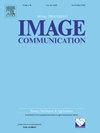迷失于光场压缩:理解计算机视觉中看不见的陷阱
IF 2.7
3区 工程技术
Q2 ENGINEERING, ELECTRICAL & ELECTRONIC
引用次数: 0
摘要
在我们追求有效压缩的过程中,我们是否忽视了光场的一个基本方面?光场中包含的大量数据使得压缩成为必要。然而,从应用的角度来看,焦点主要集中在视觉消费上,而光场具有可以潜在地用于各种其他任务的属性。本文探讨了光场压缩对后续计算机视觉任务性能的影响。我们研究了不同视角下的质量差异及其对人脸识别系统和视差估计的影响。通过利用不同的光场图像数据集,我们全面评估了各种人脸识别算法在不同的传统和基于学习的压缩技术(如JPEG Pleno, ALVC和sdn - qvrf)下的性能。我们的研究结果表明,给定特定的识别框架,随着压缩水平的增加,峰值识别性能明显下降。此外,我们确定了识别阈值的显著变化,特别是在响应更高程度的压缩时。其次,通过一种新的视差估计算法,我们探讨了光场视角的信息损失。我们的结果突出了视觉保真度的保存和微小细节的损失之间的脱节,这对于光场图像中视差信息的保存至关重要。本文的研究结果旨在促进高效压缩策略的发展,同时强调压缩效率、主观质量和特征保存之间的微妙平衡,以提高专用光场系统的精度。本文章由计算机程序翻译,如有差异,请以英文原文为准。

Lost in light field compression: Understanding the unseen pitfalls in computer vision
Could we be overlooking a fundamental aspect of light fields in our quest for efficient compression? The vast amount of data enclosed in a light field makes compression a necessity. Yet, from an application point of view, the focus is predominantly on visual consumption while light fields have properties that can potentially be used in various other tasks. This paper examines the impact of light field compression on the performance of subsequent computer vision tasks. We investigate the variations in quality across perspectives and their impact on face recognition systems and disparity estimation. By leveraging a diverse dataset of light field images, we thoroughly evaluate the performance of various face recognition algorithms when subjected to different conventional and learning-based compression techniques, such as JPEG Pleno, ALVC, and SADN-QVRF. Our findings reveal a noticeable decline in peak recognition performance as compression levels increase, given specific recognition frameworks. Furthermore, we identify a significant shift in the recognition threshold, particularly in response to higher degrees of compression. Secondly, by relying on a novel disparity estimation algorithm, we explore the loss of information across light field perspectives. Our results highlight a disconnect between the preservation of visual fidelity and the loss of minute detail crucial for the preservation of disparity information in light field images. The findings presented herein aim to contribute to the development of efficient compression strategies while emphasizing the delicate balance between compression efficiency, subjective quality, and feature preservation with the aim of increased accuracy in specialized light field systems.
求助全文
通过发布文献求助,成功后即可免费获取论文全文。
去求助
来源期刊

Signal Processing-Image Communication
工程技术-工程:电子与电气
CiteScore
8.40
自引率
2.90%
发文量
138
审稿时长
5.2 months
期刊介绍:
Signal Processing: Image Communication is an international journal for the development of the theory and practice of image communication. Its primary objectives are the following:
To present a forum for the advancement of theory and practice of image communication.
To stimulate cross-fertilization between areas similar in nature which have traditionally been separated, for example, various aspects of visual communications and information systems.
To contribute to a rapid information exchange between the industrial and academic environments.
The editorial policy and the technical content of the journal are the responsibility of the Editor-in-Chief, the Area Editors and the Advisory Editors. The Journal is self-supporting from subscription income and contains a minimum amount of advertisements. Advertisements are subject to the prior approval of the Editor-in-Chief. The journal welcomes contributions from every country in the world.
Signal Processing: Image Communication publishes articles relating to aspects of the design, implementation and use of image communication systems. The journal features original research work, tutorial and review articles, and accounts of practical developments.
Subjects of interest include image/video coding, 3D video representations and compression, 3D graphics and animation compression, HDTV and 3DTV systems, video adaptation, video over IP, peer-to-peer video networking, interactive visual communication, multi-user video conferencing, wireless video broadcasting and communication, visual surveillance, 2D and 3D image/video quality measures, pre/post processing, video restoration and super-resolution, multi-camera video analysis, motion analysis, content-based image/video indexing and retrieval, face and gesture processing, video synthesis, 2D and 3D image/video acquisition and display technologies, architectures for image/video processing and communication.
 求助内容:
求助内容: 应助结果提醒方式:
应助结果提醒方式:


